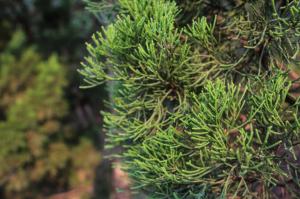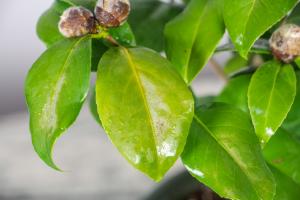1、 Plant type difference
Hawaiian coconut belongs to the palm family. Its plant type is short and its plant height is about 1-3 meters. The inner stem nodes are hollow and slender. The upper segments are very obvious, and there are no branches on the stem

The plant type of Phyllostachys pubescens is relatively tall and belongs to arboraceae. The plant type is very tall. The plant height is about 3-6 meters, the stem nodes are longer, and there are many branches on it

2、 Different leaves
The leaves of Hawaiian coconut are sparsely distributed, and the leaves are slender and feathery. There are relatively few leaves on a single branch, and the spacing between leaves is relatively large

The leaves of Phyllostachys pubescens are densely distributed, and the leaves are more narrow and long, showing a linear, and some are even needle shaped, with a length of about 3.5-6.5cm and a width of about 0.4-0.7cm. There are many leaves on a single branch, and the leaf spacing is relatively small and close

3、 Different flowers
The flowers of Hawaiian coconut are usually pink and usually axillary on the middle and upper part of the stem

Phyllostachys pubescens can also blossom, but the flower color is different, and the color is generally tender yellow


 jackfruit
jackfruit snake plant
snake plant hibiscus
hibiscus hydrangea
hydrangea lavender
lavender Green roses climb al...
Green roses climb al... If you don't pay att...
If you don't pay att... Management of four g...
Management of four g...

































